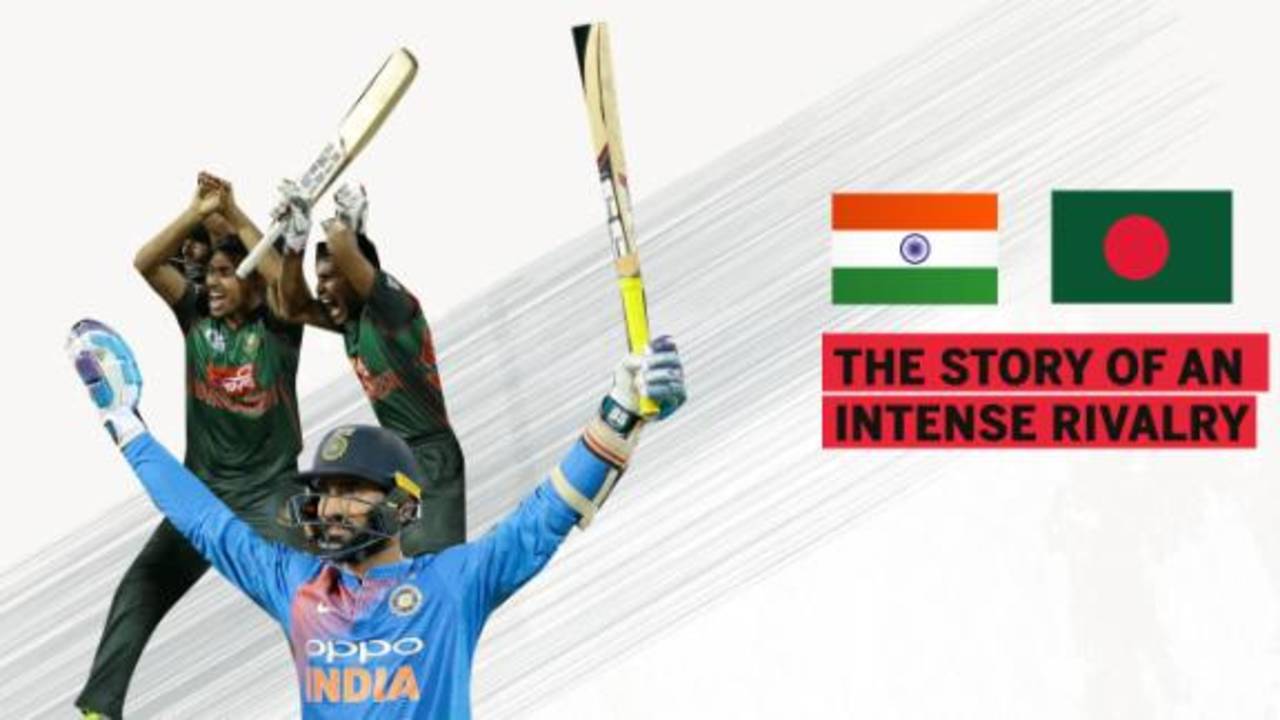How the India-Bangladesh rivalry came to be
Since their defeat in the 2015 World Cup quarter-final, whenever Bangladesh have played India, there has been that "lose to anyone but India" mentality
Shashank Kishore in Dubai
28-Sep-2018
Until 20 years ago, India versus Bangladesh was a friendly sibling rivalry. Jagmohan Dalmiya, the former ICC president, was a senior statesman-like figure who received the adulation reserved for heads of states in Dhaka.
A year out from World Cup 1999, Dalmiya organised a tri-series in India, featuring Kenya as the third team, to give Bangladesh more game time in the build up to the big event. He fought for their Test status and inducted them in 2000 amid much fanfare and criticism. Dalmiya fought to give them a voice in the ICC. In turn, Bangladesh was BCCI's 3am-friend when it came to voting on cricketing matters.
At some stage, the younger sibling wanted to emerge from the shadows of the older one, perhaps because of being marginalised when it came to cricketing matters. A lot of this was due to BCCI's indifference in terms of hosting Bangladesh, the Test team. They had to wait for 17 years before playing their first Test in the country, in February 2017.
The BCCI found ways to turn down requests to host Bangladesh even for ODIs, citing losses in the broadcast and advertising revenues. Instead, they preferred to tour there at convenient times. Over the years, as Bangladesh started to expand their cricket horizons and develop players who had the X-factor at the world stage, the obsession to beat India grew several fold.
When the biggest of upsets finally happened on the global stage, for the first time, in 2007, Bangladesh had arrived. When Tamim Iqbal stepped out to disdainfully hoick Zaheer Khan for six over long-on at the Queen's Park Oval, it was as if Bangladesh had found new self-belief.
When Mushfiqur Rahim hit the winning runs and fist-pumped his senior colleagues - he'd later rue another infamous fist-pump a decade later in Bengaluru - a country celebrated long and hard into the night. Beating India seemed a validation of their ability and talent.
However, such instances remained few and far between, and, when in 2014, the BCCI, ECB and Cricket Australia decided to take over world cricket, the gulf started to widen. Bangladesh were now worried about being marginalised even more. They wondered if the regular stream of Tests featuring the "Big Three" would come their way. They feared being pushed to a second tier, and Mushfiqur openly questioned this "bias against Bangladesh".
The administrative distractions took a back seat, and the 2015 World Cup happened. Bangladesh ousted England to make it to the quarter-finals for the first time in the tournament's history. It was to be a momentous occasion with Bangladeshi emotions running high, and, on cue, all hell broke loose. A no-ball call that reprieved Rohit Sharma triggered online wars, driven by the social media frenzy and a passionate Bangladeshi media. When Rohit went on to hit a century and oust Bangladesh, it turned into a full-blown attack.

Rubel Hossain is pumped up after dismissing Virat Kohli•Getty Images
Off the field, Virender Sehwag's pre-series shooter of "Bangladesh are an ordinary side, they can't take 20 wickets", in 2010 triggered the "lose-to-anyone-but-India" mentality, an obsession even. Since then, even if the players have tried to refrain from making statements or isolate themselves from social media chatter, they haven't been allowed to. Invariably, at press conferences, there has been the odd question about the "rivalry".
In 2015, the Mirpur crowd was particularly hostile to the Indian team, mocking them with the "mauka mauka" jibe (a Star Sports advertisement) when Bangladesh beat India in the ODI series. Sudhir Gautam, India's super fan, alleged that he was accosted outside the Shere Bangla National Stadium and had to be given security cover after an ODI in which Dhoni shoulder-barged Mustafizur in frustration. It got uglier when a photoshopped image of Taskin Ahmed holding MS Dhoni's severed head went viral on social media just before the 2016 Asia Cup final.
These instances have contributed to the 'beat India' mentality, one that has also resulted in a number of "chokes", like at the MCG in 2015 and Bengaluru in 2016, where Mushfiqur celebrated prematurely. More recently in the Nidahas Trophy, Bangladesh celebrated with the naagin dance after defeating Sri Lanka and faced India in the final, where they lost yet another nervy clash that was in their grasp until the final 12 balls of the chase.
This mentality hasn't done any credit to their remarkable progress since 2015. As an example of that progress: the side that once looked at Australia with envy, now plots mind games against them, rattles them on dry turners at home, turns around dead games into one-on-one contests, wanting to battle it out to win games for the country. They're giant-killers no more, they're dark horses that no side can underestimate, not in England, most certainly not in Bangladesh.
There has been a slight change to this mentality, though, at the Asia Cup. Mashrafe has downplayed the magnitude of the occasion, and doesn't think it's war. He admits the social media chatter around the teams has resulted in bad blood from the outside. He is clear, though, that there's nothing festering within here in Dubai.
Mashrafe summed it up best when he said: "Frankly, when Tamim took the field with a broken finger, to me I had won the Asia Cup right then. We aren't going to war in the final. Let's just treat it like a cricket match and enjoy the occasion."
Over to team now, to show composure and the confidence they've gathered over the years, rather than show the "win at all cost" mentality that has perhaps resulted in more pressure on Tamim, Shakib and Mushfiqur than any injury.
Shashank Kishore is a senior sub-editor at ESPNcricinfo
